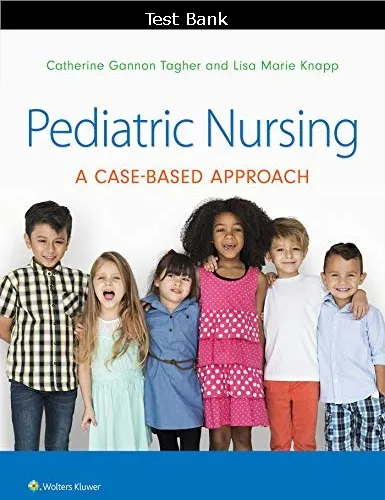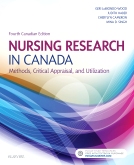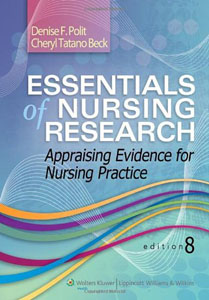Pediatric Nursing: A Case-Based Approach 1st Edition Test bank
$55.00 Original price was: $55.00.$19.00Current price is: $19.00.
Digital item No Waiting Time Instant Download
Chapters: 34
Format: PDF
ISBN-13: 978-1496394224
ISBN-10: 1496394224
Publisher: LWW
Authors: Dr. Gannon Tagher, Dr. Lisa Knapp
Description
Pediatric Nursing: A Case-Based Approach 1st Edition Test bank
Table of Contents
- Unit 1: Scenarios for Clinical Preparation
- Chapter 1: Chip Jones: Bronchiolitis
- Chapter 2: Mollie Sanders: Asthma
- Chapter 3: David Torres: Ulnar Fracture
- Chapter 4: Ellie Raymore: Urinary Tract Infection and Pyelonephritis
- Chapter 5: Maalik Abdella: Gastroenteritis, Fever, and Dehydration
- Chapter 6: Abigail Hanson: Leukemia
- Chapter 7: Caleb Yoder: Heart Failure
- Chapter 8: Andrew Hocktochee: Failure to Thrive
- Chapter 9: Jessica Wang: Tonic-Clonic Seizures
- Chapter 10: Sophia Carter: Diabetes Mellitus Type 1
- Chapter 11: Chase McGovern: Second-Degree Burns
- Chapter 12: Natasha Austin: Sickle Cell Anemia
- Chapter 13: Jack Wray: Attention Deficit Hyperactivity Disorder
- Chapter 14: Adelaide Wilson: Obesity
- Unit 2: Care of the Developing Child
- Chapter 15: Care of the Newborn and Infant
- Chapter 16: Care of the Toddler
- Chapter 17: Care of the Preschooler
- Chapter 18: Care of the School-Age Child
- Chapter 19: Care of the Adolescent
- Unit 3: Care of the Hospitalized Child
- Chapter 20: Alterations in Respiratory Function
- Chapter 21: Alterations in Cardiac Function
- Chapter 22: Alterations in Neurological and Sensory Function
- Chapter 23: Alterations in Gastrointestinal Function
- Chapter 24: Alterations in Genitourinary Function
- Chapter 25: Alterations in Hematological Function
- Chapter 26: Oncological Disorders
- Chapter 27: Alterations in Musculoskeletal Function
- Chapter 28: Alterations in Neuromuscular Function
- Chapter 29: Alterations in Integumentary Function
- Chapter 30: Alterations in Immune Function
- Chapter 31: Alterations in Endocrine Function
- Chapter 32: Genetic Disorders
- Chapter 33: Alterations in Cognition and Mental Health
- Chapter 34: Pediatric Emergencies
-
Pediatric Nursing – A Case-Based Approach 1st Edition Tagher Knapp Test Bank
- Chapter 1: Bronchiolitis
1. Which intervention is appropriate for the infant hospitalized with bronchiolitis?
a. Position on the side with neck slightly flexed.
b. Administer antibiotics as ordered.
c. Restrict oral and parenteral fluids if tachypneic.
d. Give cool, humidified oxygen.
ANS: D
Cool, humidified oxygen is given to relieve dyspnea, hypoxemia, and insensible fluid loss from
tachypnea. The infant should be positioned with the head and chest elevated at a 30- to 40-degree
angle and the neck slightly extended to maintain an open airway and decrease pressure on the
diaphragm. The etiology of bronchiolitis is viral. Antibiotics are given only if there is a
secondary bacterial infection. Tachypnea increases insensible fluid loss. If the infant is
tachypneic, fluids are given parenterally to prevent dehydration.
2. An infant with bronchiolitis is hospitalized. The causative organism is respiratory syncytial
virus (RSV). The nurse knows that a child infected with this virus requires what type of
isolation?
a. Reverse isolation
b. Airborne isolation
c. Contact Precautions
d. Standard Precautions
ANS: C
RSV is transmitted through droplets. In addition to Standard Precautions and hand washing,
Contact Precautions are required. Caregivers must use gloves and gowns when entering the
room. Care is taken not to touch their own eyes or mucous membranes with a contaminated
gloved hand. Children are placed in a private room or in a room with other children with RSV
infections. Reverse isolation focuses on keeping bacteria away from the infant. With RSV, other
children need to be protected from exposure to the virus. The virus is not airborne.
3. A child has a chronic cough and diffuse wheezing during the expiratory phase of respiration.
This suggests what condition?
a. Asthma
b. Pneumonia
c. Bronchiolitis
d. Foreign body in trachea
ANS: A
Asthma may have these chronic signs and symptoms. Pneumonia appears with an acute onset,
fever, and general malaise. Bronchiolitis is an acute condition caused by respiratory syncytialvirus. Foreign body in the trachea occurs with acute respiratory distress or failure and maybe
stridor.
4. Which nursing diagnosis is most appropriate for an infant with acute bronchiolitis due to
respiratory syncytial virus (RSV)?
a. Activity Intolerance
b. Decreased Cardiac Output
c. Pain, Acute
d. Tissue Perfusion, Ineffective (peripheral)
ANS. A
Rationale 1: Activity intolerance is a problem because of the imbalance between oxygen supply
and demand. Cardiac output is not compromised during an acute phase of bronchiolitis. Pain is
not usually associated with acute bronchiolitis. Tissue perfusion (peripheral) is not affected by
this respiratory-disease process.
Rationale 2: Activity intolerance is a problem because of the imbalance between oxygen supply
and demand. Cardiac output is not compromised during an acute phase of bronchiolitis. Pain is
not usually associated with acute bronchiolitis. Tissue perfusion (peripheral) is not affected by
this respiratory-disease process.
Rationale 3: Activity intolerance is a problem because of the imbalance between oxygen supply
and demand. Cardiac output is not compromised during an acute phase of bronchiolitis. Pain is
not usually associated with acute bronchiolitis. Tissue perfusion (peripheral) is not affected by
this respiratory-disease process.
Rationale 4: Activity intolerance is a problem because of the imbalance between oxygen supply
and demand. Cardiac output is not compromised during an acute phase of bronchiolitis. Pain is
not usually associated with acute bronchiolitis. Tissue perfusion (peripheral) is not affected by
this respiratory-disease process.
Global Rationale: Activity intolerance is a problem because of the imbalance between oxygen
supply and demand. Cardiac output is not compromised during an acute phase of bronchiolitis.
Pain is not usually associated with acute bronchiolitis. Tissue perfusion (peripheral) is not
affected by this respiratory-disease process.Chapter 2: Asthma
1. The nurse is caring for a child hospitalized for status asthmaticus. Which assessment finding
suggests that the childs condition is worsening?
a. Hypoventilation
b. Thirst
c. Bradycardia
d. Clubbing
ANS: AThe nurse would assess the child for signs of hypoxia, including restlessness, fatigue, irritability,
and increased heart and respiratory rate. As the child tires from the increased work of breathing
hypoventilation occurs leading to increased carbon dioxide levels. The nurse would be alert for
signs of hypoxia. Thirst would reflect the childs hydration status. Bradycardia is not a sign of
hypoxia; tachycardia is. Clubbing develops over a period of months in response to hypoxia. The
presence of clubbing does not indicate the childs condition is worsening.2. Which finding is expected when assessing a child hospitalized for asthma?
a. Inspiratory stridor
b. Harsh, barky cough
c. Wheezing
d. Rhinorrhea
ANS: C
Wheezing is a classic manifestation of asthma. Inspiratory stridor is a clinical manifestation of
croup. A harsh, barky cough is characteristic of croup. Rhinorrhea is not associated with asthma.3. A child has had cold symptoms for more than 2 weeks, a headache, nasal congestion with
purulent nasal drainage, facial tenderness, and a cough that increases during sleep. The nurse
recognizes these symptoms are characteristic of which respiratory condition?
a. Allergic rhinitis
b. Bronchitis
c. Asthma
d. Sinusitis
ANS: D
Sinusitis is characterized by signs and symptoms of a cold that do not improve after 14 days, a
low-grade fever, nasal congestion and purulent nasal discharge, headache, tenderness, a feeling
of fullness over the affected sinuses, halitosis, and a cough that increases when the child is lying
down. The classic symptoms of allergic rhinitis are watery rhinorrhea, itchy nose, eyes, ears, and
palate, and sneezing. Symptoms occur as long as the child is exposed to the allergen. Bronchitis
is characterized by a gradual onset of rhinitis and a cough that is initially nonproductive but may
change to a loose cough. The manifestations of asthma may vary, with wheezing being a classic
sign. The symptoms presented in the question do not suggest asthma.
4. What is a common trigger for asthma attacks in children?
a. Febrile episodes
b. Dehydration
c. Exercise
d. Seizures
ANS: C





Be the first to review “Pediatric Nursing: A Case-Based Approach 1st Edition Test bank”